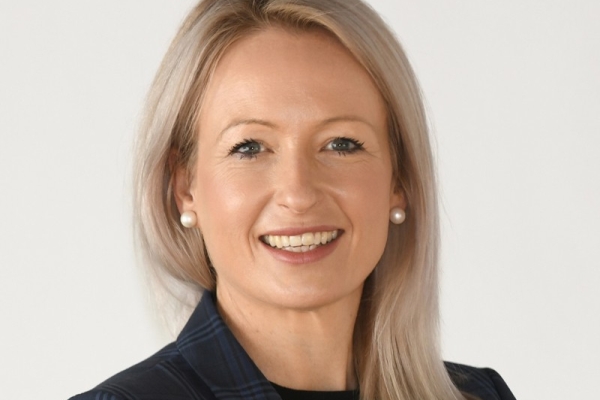Published on the 19/04/2023 | Written by Heather Wright

Woolworths NZ leader explains why D&A teams need to learn to show off…
It’s time for local data and analytics leaders to rise up, blow their own trumpets and show how data and analytics delivers value – and successes – especially when it comes to driving productivity for both businesses and the wider economy.
That’s the call to arms from Kari Jones, general manager of analytics and insights at Woolworths NZ, who says data and analytics teams have the power to transform businesses – and the wider economy.
“Realtime data, rapid analytics, artificial intelligence, intelligent process automation, – all of these data-driven technologies have a massive opportunity for New Zealand businesses to really drive the next level of productivity,” Jones says.
In her role at Woolworths, Jones, who is MC for the 2023 New Zealand Data & Analytics Summit, has both local and Australia and New Zealand-wide group accountabilities.
“Senior analytics professionals like myself have got to get really fluent in the language of the organisation.”
Locally, she leads a team of 100 analytics professionals across loyalty, store operations, risk, sustainability, managing the analytics transformation and enablement end-to-end. A/NZ wide, she’s also a member of Woolworths’ advanced analytics leadership team, wiq, and is responsible for leading a culture transformation around data through the Woolworths Data Academy.
But despite talk about data and analytics needing a place at the top table and organisations wanting to be data-driven and analytics fuelled, Jones notes a lack of chief data analytics officer roles in A/NZ and even less with a seat at the executive table – even though the role has been around for about 20 years.
Jones says she’s often found it a challenge to convince executive teams to take data foundational work like data governance, data pipelines or data platform work seriously. This has forced her to reflect and improve how she communicates complex topics to non-technical people.
“Data governance isn’t exactly the sexy stuff, but in our world the master data and data quality really does keep our operations team members safe, it saves us money, it keeps our brand reputation intact and it will ultimately accelerate our AI roadmap.
“Senior analytics professionals like myself have got to get really fluent in the language of the organisation, we need to be able convince, explain the value, demonstrate business acumen as well as network and build strong pan-organisation relationships so we can build the authority and trust to be able to go to the MD and say ‘have you heard of generative AI? We need to look at how we make use of it, or not, in our organisation’.
“And they should be able to respond with, ‘100 percent, write me a paper, we’ll present it to the exec’.”
The technical background of data and analytics professionals, like that of other tech colleagues, can often put them on a back foot when it comes to presenting information in a way that captures an executive’s attention.
For Jones, that’s meant extensive training, both internal and external, in the ‘harder skills’ such as communications, credibility building, presenting and ‘writing a great deck’ – something she’s also instilling in her team, with a policy of ‘doing good work, then showing the good work’.
“In the same way that social norms dictate that you don’t turn up to a BBQ without bringing a plate, you also need to understand the organisational norms. If a great presentation deck is required to demonstrate our capability and credibility, then we are going to get really good at that.”
Quarterly impact reports and showcases, where her team presents to stakeholders, are just two of the ways Jones ensures the data and analytics teams’ work is in the spotlight at Woolworths.
“I do wonder how much is on us [analytics leaders] for not ‘demanding’ that seat at the table. We need to up our organisational savvy, our political savvy to talk the language of the business, being able to get excited about delivering strategic outcomes, not technology,” she says.
“No one is going to care about the amazing job you did at cleaning up data quality. No one is ever going to give you a gold medal for that. But if you are able to stand up at an executive showcase and explain how that data quality work has a direct impact on the performance of your supply chain, or your ability to get customer orders out to them in full and on time, that’s when people start to connect the dots, that is when they see the impact of your contribution.
And while Kiwis in particular ‘don’t like showoffs’, Jones is blunt: “That’s exactly what analytics leaders need to do regularly and often. We have to show off the amazing work the team is delivering alongside their business colleagues and you’ve got to show it often.”
She notes that for many organisations, analytics success remains in pockets around the organisation, with the ability to scale being a challenge without significantly increasing the size of the team.
That’s a challenge Woolworths is currently tackling. It has been seeking out more new ways of working and productivity tools to accelerate the delivery process and decrease time to value. One particular area of challenge has in scaling the number of personalised and relevant offers for customers.
“About 12 months ago we realised that we could no longer scale what we were doing. We’re at a point in time when the solution we had reached its technical limitations. We couldn’t achieve the level of relevancy customers were asking for. So the team is recoupling and rebuilding aspects of our personalisation platform.”
Old technologies are being removed, with new advanced ML tooling such as Google’s Vertex AI being used to create an environment which democratises machine learning and data science to a larger pool of people.
“We’re laying down our machine learning foundation, or our MLOps platform which will make it much easier for our junior data scientists to create new advanced analytics and machine learning models and put them into production in super quick time.”
It’s a project which will see deployment going from ‘months and months down to weeks to months’.
The team is also building in requirements to ensure compliance to international AI regulations around observability and explainability of models into the platform now, rather than waiting for local legislation.
“Our catalyst is the work we are doing around improving the relevancy of our offers for customers, but its applicability is end-to-end – it can be reused to improve the shelf life of products by predicting the deterioration of strawberries in our supply chain as well,” she says.
Change management is also a key part of the project, and another area where Jones says data and analytics leaders can sometimes fall short.
“It is a capability that we sometimes forget in analytics, and you are never going to realise any benefits, or make an impact, if no one knows how to use the tool or you haven’t managed to embed it into the business process or you haven’t hand-held your stakeholder through how to use the amazing insight or amazing tool you have built.
“That can be really soul destroying for analytics professionals. To positively impact the business and enable an analytics transformation , we all just need to get a little better at the change management side of things.
“And make it ok to show off a bit.”
The 2023 New Zealand Data & Analytics Summit will be held in Auckland on May 30. Find out more and book tickets here.



























